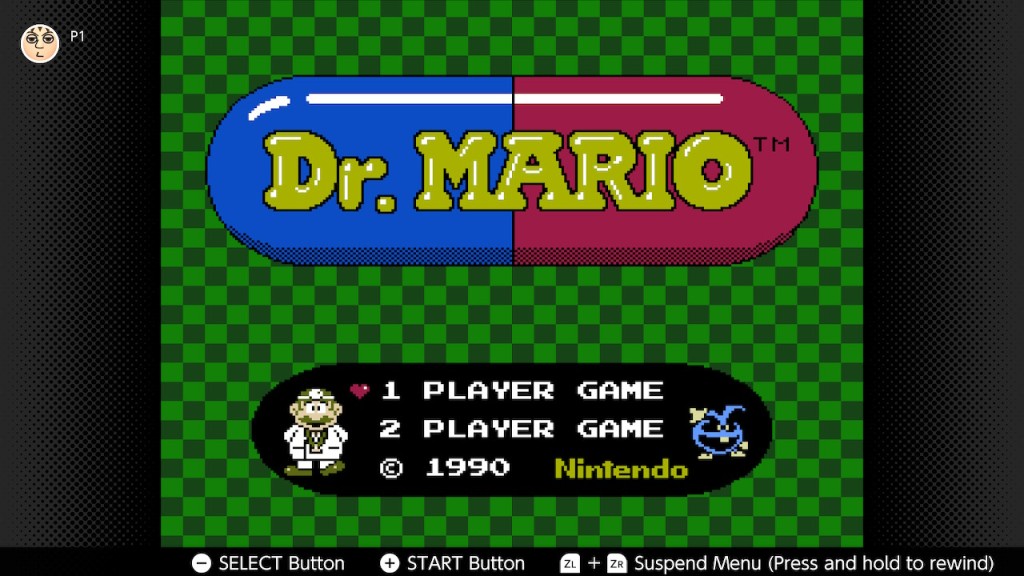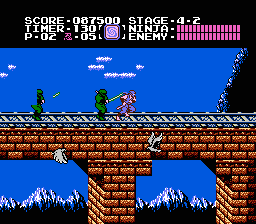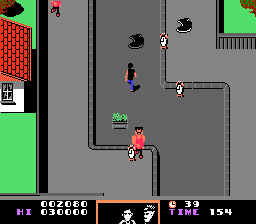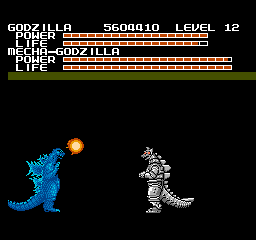8-Bit Christmas is a new HBO Max Christmas comedy, about a father recounting a story to his daughter. The story of his quest to get a Nintendo Entertainment System for Christmas during his youth in the late 1980s. As soon as you read that premise, your mind is probably thinking 8-Bit Christmas is like A Christmas Story meets Jingle All the Way, and I think that’s what the movie is aiming for. Unfortunately, that fun combination of retro Christmas movies exists in premise only, as 8-Bit Christmas seems to squander its humor – and the simple premise of “kid wants Nintendo for Christmas” – at every other turn.
The aforementioned father is Jake Doyle (Neil Patrick Harris), who begins telling the tale when his family visits his parents’ house for the holidays, and he and his daughter boot up his old Nintendo Entertainment System (or simply “the Nintendo” as the film calls it, as many of us did back in the day). They pause the game as soon as they start playing it in order for Jake to spin his yarn, with the movie failing to make the obvious jab at the irony that they could be playing the Nintendo instead of talking about how he got it. If the movie fails to even make that obvious joke, well, let that be an indicator of things to come. There’s a lot of missed opportunities for humor going forward.
Flashing back to the “late 80s” and young Jake Doyle (Winslow Fegley) wants nothing more than to get an NES for Christmas. But his parents (Steve Zahn and June Diane Raphael) have no intention of getting him the console, citing its hefty price tag and, more annoyingly, buying into the hysteria of video game violence that many a dumb parent bought into during the 80s (and well into the 90s). The only kid in town who owns a Nintendo is a spoiled rich brat who insists the other kids in the neighborhood bring him gifts just for the opportunity to watch him play Nintendo. But Jake is desperate enough that he does what the rich kid asks just to catch a glimpse of the video game system.
That all changes when an accident occurs at the rich kid’s house, as the brat grows frustrated at his defective Power Glove (that is to say, his Power Glove) and he jumpkicks the TV, which falls and crushes his dog. The dog ends up being okay, but the film takes its sweet time letting us know this, which seems awfully cruel for a PG-rated movie (when will comedies learn that you can’t make a dog getting hurt funny? It just doesn’t work. It can’t). The rich kid’s parents then lead the neighborhood’s revolt against video games (though this isn’t brought up until later, and even then, feels only half-realized).
With his only access to Nintendo in the past, the young Jake Doyle decides to take matters into his own hands and win a Nintendo for himself, as his scout troop is giving one away to whomever can sell the most Christmas wreaths. Of course, that ends up being just one of several endeavors Jake Doyle partakes in his quest to get his own Nintendo. Sadly, every last one of these endeavors ends up feeling, you guessed it, half-realized.
That’s the main issue with 8-Bit Christmas, it introduces a number of situations that could be funny, but never manages to wring anything memorable or comedic out of them (I guess the idea that the gym teacher was among those bringing gifts to the rich kid in order to see the Nintendo was kind of funny, but that’s one quick gag). You could argue that the movie puts the nostalgia for Nintendo and the 80s ahead of the comedy, which could provide something entertaining (if pandering) in its own right. But 8-Bit Christmas even fails at the nostalgia.
For example, the only two real life games you see played in the movie are Paper Boy and Rampage, which are hardly the first two games you’d think of when you think of the NES. The game you see given the most play time is a fighting game made exclusively for the movie (leading me to think the images the filmmakers made for the game were simply placeholders until they could secure the rights to use a real game, but never ended up getting the rights to whatever that was). Despite the movie being about a kid’s obsession with Nintendo, Super Mario Bros. and The Legend of Zelda only get one verbal mention apiece. I mean, if your movie is going to pander to the nostalgia of people like me who grew up with Nintendo, then at least give us what we want to see.
There are other details the movie gets wrong about the time period, like how Jake’s sister is part of the Cabbage Patch Kids craze, something that happened in 1983, two years before the NES was even released. Granted, I think the movie is trying to use Jake’s faulty memory as a means to give its flashback narrative an excuse to smoosh together as much 1980s as possible, similar to the television series The Goldbergs, but that can only go so far. It’s one thing if Adam Goldberg wears a Roger Rabbit shirt in a time before he should be wearing it, but it’s another thing if the entire story is built on some weird Frankenstein’s Monster of the 1980s.
The movie has a little bit of fun with the idea of Jake’s memory at first, like when he’s seen riding his bike wearing only a cap, until his present-day daughter asks if he wore a helmet like he always tells her, and then a helmet magically appears on the young Jake’s head in the flashback. There’s also Jake’s father’s penchant for swearing being replaced with an angry “God bless it!” as Jake censors the story for his daughter. Then there’s Jake’s parents’ blatant favoritism towards his sister, which he’s adding to his story to make it sound like the odds were stacked against him all the more. And I think we’re to assume the rich kid’s aforementioned jumpkick to the TV is supposed to be an embellishment. These are fun little ideas, but the movie seems to forget about this element as it goes on, which is a shame because this is where playing with the idea of faulty memory can be fun. Had they stuck to it throughout there could have been more creativity here.
I suppose asking for creativity out of this movie is asking for too much. Again, this is a movie of half-realizations. The pieces are all here to make for a good Christmas comedy, but nothing ever really comes together. For example, there’s a scene where – after all the stores sold out of Cabbage Patch Kids – Jake and his father decide to buy one for his sister from a “street dealer” in the middle of the night. The dealer (David Cross) opens the trunk of his car to reveal the Cabbage Patch Kids among other toys, including an NES. The scene feels entirely detached from the main plot until Jake sees the Nintendo in the trunk. But nothing comes from it. Jake doesn’t try to talk his dad into it or barter with the toy dealer to get the NES. So what’s the point of the scene? What’s the punchline? The concept of the guy dealing toys on the streets is an appropriately silly concept, but you kind of have to bring it to life with jokes and writing. Suffice to say, the Seinfeld scene with showerhead smugglers, this is not.
8-Bit Christmas’s inability to bring out the comedy in its situations is one of its two great faults. The other is that the movie can’t seem to decide who it wants its target audience to be. Given the film’s PG rating, it’s as crude as it can be, with references to vomit and diarrhea abound. At times it seems like it wants to get cruder with its content (like dropping a TV on a dog, not that that would ever be funny no matter the rating), but it’s too skittish to go further because it also wants to be a kids’ movie. But it also isn’t smart enough to figure out how to tell jokes within the “restraints” of its PG rating. 8-Bit Christmas is a movie that’s almost one thing, and not quite another.
This indecisiveness is perhaps most prevalent in the film’s finale in which – without spoiling anything – the movie suddenly tries to salvage itself with a heartwarming ending between young Jake and his father. Up until that point the movie has been aiming (and missing) to just be dumb fun, when it isn’t trying to be crude and irreverent, that is. So for the ending to suddenly try to bring sentimentality to the picture makes that sentiment feel unearned.
You can tell 8-Bit Christmas is yearning to be compared to A Christmas Story, which is considered a classic Christmas comedy. It’s not A Christmas Story, it’s not even Jingle All the Way. At least that movie embraced its lunacy and, dumb as it may be, is the kind of movie that will leave you with a big, goofy grin on your face. I would have been perfectly fine if 8-Bit Christmas were simply “Jingle All the Way but with a Nintendo.”
I admit I’ve seen far worse Christmas movies than 8-Bit Christmas. Winslow Fegley fits the role of a Nintendo obsessed kid in the 80s, and Neil Patrick Harris’s narration helps move things along. And its jabs at the pointless controversies surrounding video games back in the day are funny (though they’re only really funny if you’re someone like me, who remembers all that silliness, as opposed to the film bringing anything funny out of it through its own creativity). But the film ends up feeling aimless and directionless as it fails to capitalize on any of the situations it introduces. Was it really so difficult for 8-Bit Christmas to just have the silly, simple story of a kid wanting a Nintendo for Christmas, and running with it?
One other movie that 8-Bit Christmas may draw comparisons to is The Wizard, the 1989 Fred Savage vehicle that was little more than an advertisement for Nintendo (and Universal Studios). The difference between the two is that you can laugh at The Wizard, because it was supposed to be serious despite its failings. But when you’re supposed to laugh at something and can’t, it’s harder to appreciate even ironically.
8-Bit Christmas is like the Power Glove… it’s so bad.
4























